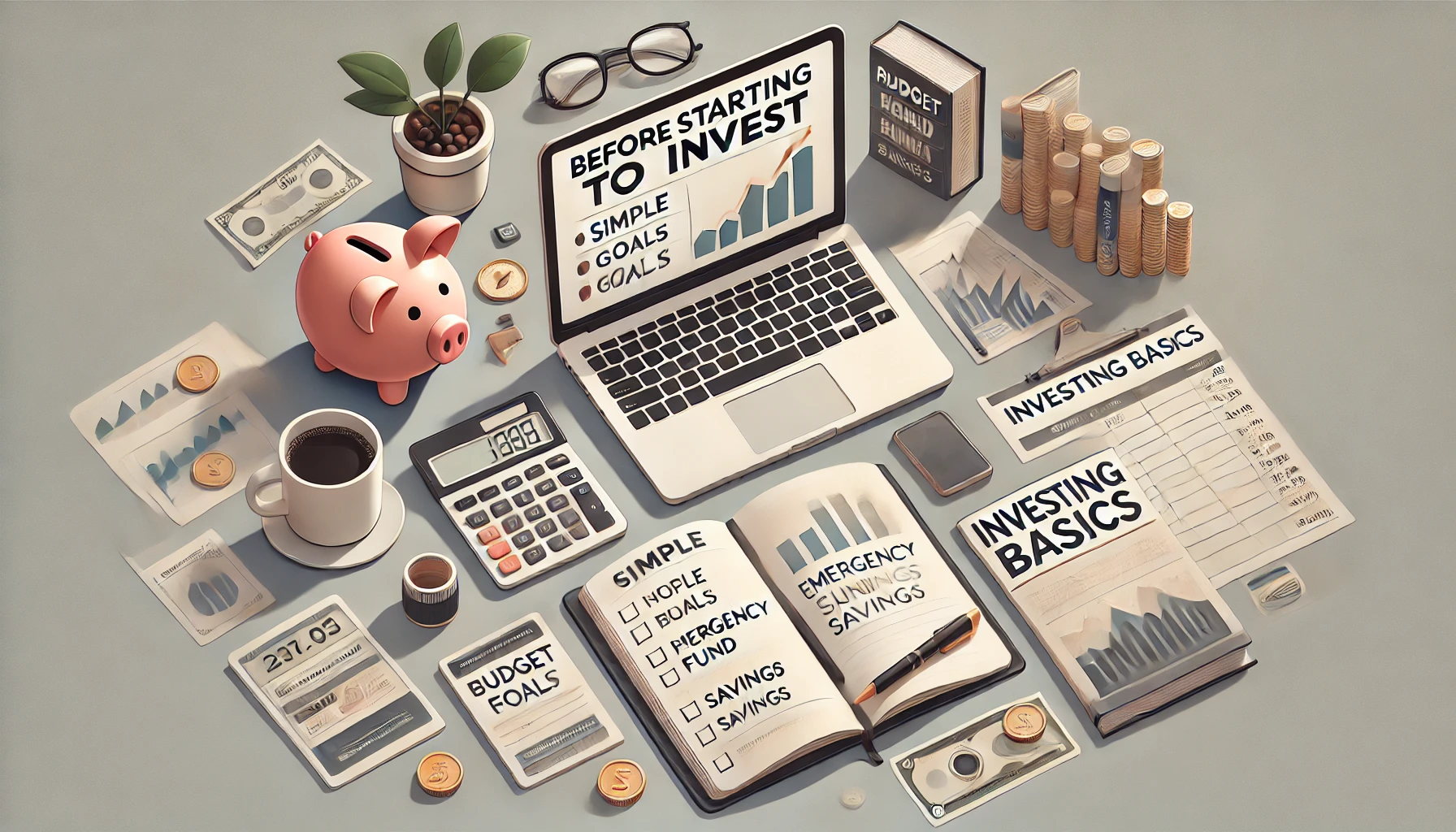Investing is one of the best ways to build wealth over time. But jumping in too fast—without a plan—can lead to confusion, mistakes, or even money loss.
Before you buy your first stock or open an investing app, it’s important to set the foundation for success.
In this article, você vai aprender quais são os passos simples e essenciais que você deve seguir antes de começar a investir — para garantir que você esteja pronto, confiante e no caminho certo para o crescimento financeiro.
Why It’s Important to Prepare Before Investing
Investing isn’t about luck or quick wins. It’s about:
- Long-term thinking
- Strategy and patience
- Making informed decisions
- Avoiding panic and bad timing
When you start with the right steps, you build a strong financial base that supports your future investments.
Step 1: Understand Your “Why”
Ask yourself:
“Why do I want to invest?”
Your answer will guide your strategy.
Examples of goals:
- Retirement
- Buying a home in 10+ years
- Building wealth slowly
- Saving for a child’s future
- Creating passive income over time
Investing without a goal is like driving without a destination.
Step 2: Get a Grip on Your Budget
Before investing, make sure your day-to-day money is under control.
You should know:
- Your monthly income
- Your fixed expenses
- How much you can comfortably set aside each month
💡 Tip: Treat investing like a recurring bill—budget for it on purpose.
Step 3: Pay Off High-Interest Debt First
If you’re carrying credit card debt or payday loans, focus on paying them off before investing.
Why:
- Credit card interest can be 20% or more
- The average stock market return is 7–10%
- You’ll lose more to debt than you’ll gain from investing
Paying off high-interest debt is a guaranteed return.
Step 4: Build an Emergency Fund
Investments can go up and down—so you don’t want to be forced to sell when the market dips.
Goal:
- Save at least $500–$1,000 to start
- Eventually grow to 3–6 months of expenses
Keep this money in a separate savings account, not in the stock market.
Step 5: Learn the Basics of Investing
You don’t need to be an expert—but you should know some key terms.
Learn about:
- Stocks: ownership in a company
- Bonds: lending money to a company or government
- ETFs (Exchange-Traded Funds): groups of investments in one package
- Index Funds: low-cost, diversified investment options
- Dividends: profits some companies pay to investors
- Compound Interest: when your money earns money
💡 Use YouTube, blogs, or free courses to learn in your style.
Step 6: Choose the Right Investing Platform
Pick a trustworthy app or brokerage that fits your needs.
Good beginner platforms:
- Fidelity or Vanguard (for long-term, low-fee investing)
- Acorns (round-up investing)
- Robinhood (commission-free trading)
- Public or SoFi Invest (easy-to-use apps with education tools)
Look for:
- No account minimums
- Low or no fees
- Good customer support
- Easy interface
Step 7: Decide How Much to Invest
Start small—you don’t need thousands to begin.
Start with:
- $25/week
- $100/month
- A percentage of your paycheck
The most important part is consistency, not amount. You can always scale up later.
Step 8: Choose a Long-Term Strategy
Avoid day trading or chasing trends as a beginner.
Safer long-term strategies:
- Invest in index funds or ETFs
- Use a Roth IRA if available
- Reinvest dividends automatically
- Avoid checking your investments daily
Focus on the big picture—not short-term noise.
Step 9: Understand Your Risk Tolerance
Everyone reacts differently to market ups and downs.
Ask yourself:
- Can I handle short-term losses?
- Do I panic when I see red numbers?
- How soon will I need this money?
If you’re investing for a goal 10+ years away, you can afford more risk.
If you need the money sooner, stay conservative.
Step 10: Set It and (Mostly) Forget It
Once you start investing, automate your contributions and review your portfolio just a few times a year.
Avoid:
- Obsessively checking your account
- Following social media hype
- Selling out of fear
Let time and consistency do the work for you.
Final Thought: Preparation Is Power
Starting to invest doesn’t have to be complicated—but preparation is what makes the difference between success and stress.
Build your foundation first: ✔️ Budget
✔️ Emergency fund
✔️ No high-interest debt
✔️ Basic knowledge
Then start small, stay consistent, and keep your eyes on the long-term prize.
Your future self will thank you.
